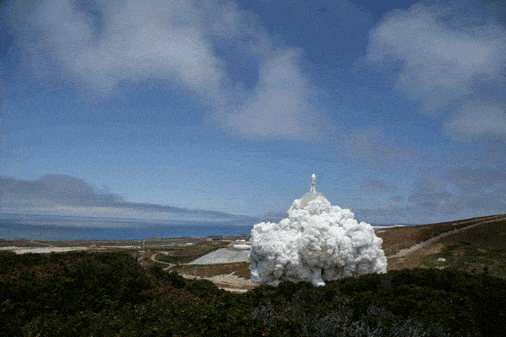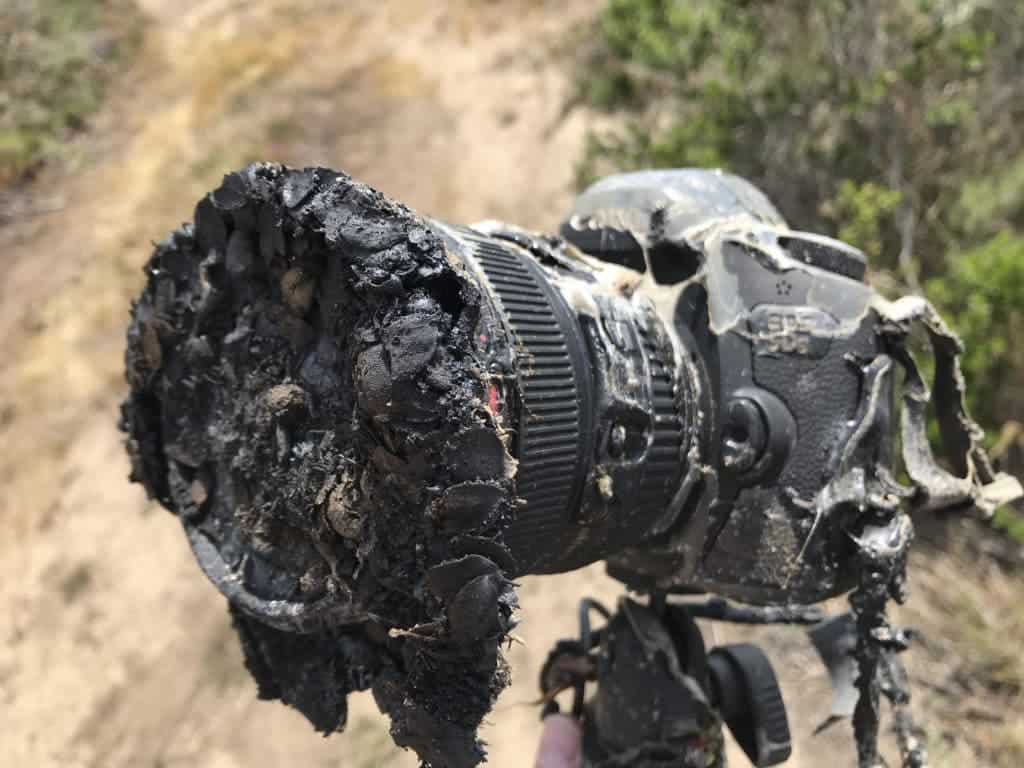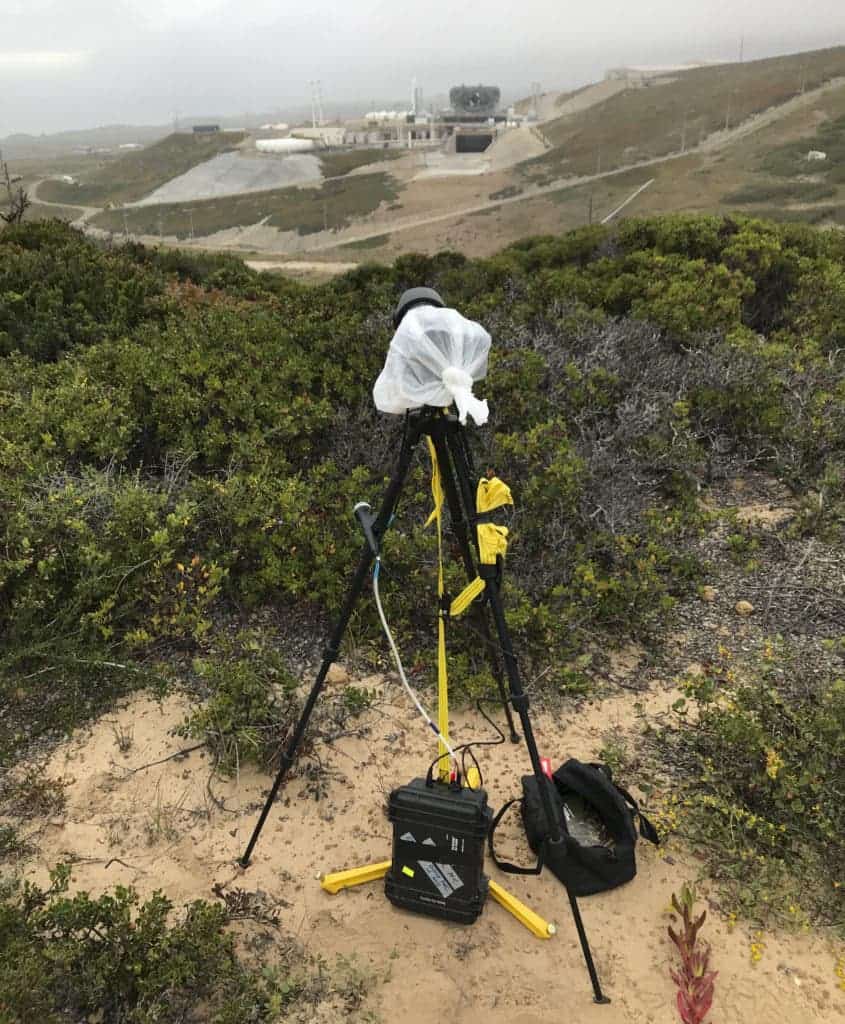
A remote camera records its last moments during NASA/German GRACE-FO launch on May 22, 2018. Credit: NASA/Bill Ingalls.
Bill Ingalls is one of NASA’s go-to photographers when launches need to be documented. On May 22, he was responsible for recording a SpaceX launch from multiple vantage points. But despite his 30 years of experience shooting rocket launches, nothing could have prepared him for what happened next: one of his cameras got engulfed by flames set off by the booster. However, you could say it was all worth it. Now, we at least have this amazingly rare point of view.
It’s not like it was Ingalls’ fault, either.
“I had six remotes, two outside the launch pad safety perimeter and four inside,” Ingalls said in a statement for NASA. “Unfortunately, the launch started a grass fire that toasted one of the cameras outside the perimeter.”
The burned camera was actually the farthest out of all the bunch. However, it was surrounded by vegetation that caught fire from the booster’s ignition, which spread beyond the boundaries of the launch zone. When Ingalls inspected the site after the launch was over, he found that his Canon’s body was destroyed by the fire. Somehow, though, his memory card was unharmed and when he plugged it into his computer, the camera’s last recording was uncorrupted.

NASA Photographer Bill Ingalls’s camera after it was caught in brushfire caused by the launch of the NASA/German GRACE-FO from Vandenberg Air Force Base on May 22, 2018. Credits: NASA/Bill Ingalls.

NASA Photographer Bill Ingalls’s remote camera setup before the NASA/German GRACE-FO launch from Vandenberg Air Force Base on May 22, 2018. Credits: NASA/Bill Ingalls
The toasted camera will likely go on display somewhere at NASA’s headquarters in Washington, DC. Meanwhile, Ingalls is preparing to travel to Kazakhstan where he will document the June 3 landing of the International Space Station’s Expedition 55 crew. He doesn’t think he’ll come back with a melted camera this time.









